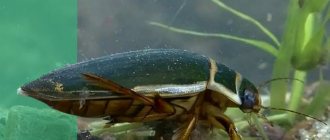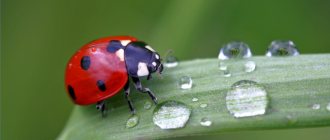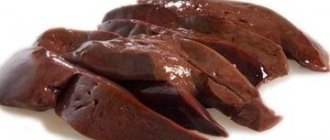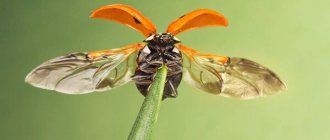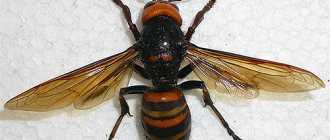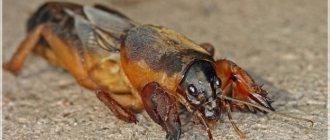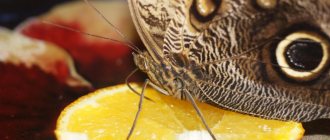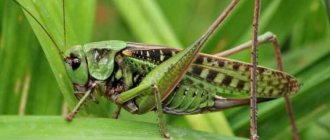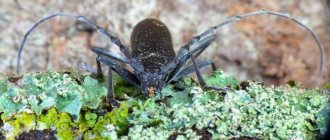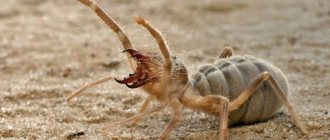Peculiarities
Aquatic insects have protection from getting wet: their body is covered with a thick layer of fluff, a waterproof shell or a layer of fat.
But this does not stop some from flying beautifully. Aquatic insects must store oxygen to be able to live underwater. Breathing patterns vary depending on the species. Many aquatic larvae breathe using gills, small “bags” under the skin. They absorb oxygen in the water through the surface of the body. Thus, this method of breathing is characteristic of the larvae of dragonflies and mayflies.
Mosquito larvae are suspended under the water surface and obtain oxygen from the air using something like breathing tubes.
The swimming beetle and smooth beetle make up reserves of air, which they take on the surface and retain it under the elytra or in the villi covering their body.
mayfly
Sometimes in the spring you can see many tiny winged creatures - mayflies - flying over the surface of a river or lake. Where do they come from? It is from the bottom of these reservoirs. For two years, their larvae live at the bottom, feeding on what accumulates in the silt, and go through multiple molts. And finally, having acquired wings, these creatures fly to the surface. But most of them do not live to see the sun set. That's why they were called mayflies.
mayfly
But they are not the only ones with such a life cycle. Insects whose larvae live in water and adults above water also include stoneflies and caddisflies. Mayflies live all over the globe, except for the Hawaiian Islands, St. Helena Island and Antarctica.
Most insect larvae molt until they develop wings. After this they become adults. However, in mayflies everything happens differently. After going through about 20 molts and acquiring wings, the mayfly turns not into an imago, but into a subimago. This means that she is still unable to reproduce and must molt one more time to finally “grow up.” Thus, the mayfly is an exception among insects.
Mass flight of mayflies from the water
An adult mayfly is easily identified by the three long filaments at the end of its abdomen and its wide, reticulated wings. This insect can often be seen on the stems of various plants and flowers, but the mayfly does not drink nectar or eat leaves. Unlike its own larva, it can no longer consume and digest food - its jaws are not able to perform its function, and its intestines are filled with air. But there is no need for the mayfly to eat. This insect has one task - to lay eggs, after which it soon dies.
Translucent insects - silverfish
Most often, small, almost flat, small bugs can be seen in the bathroom and toilet. This is a common silverfish. They come in white, pearl gray or brownish color. Immediately after molting, they are almost transparent, later becoming darker. The shape resembles an elongated triangle. Long thin antennae protrude from one and the other side of the small body (4-8 mm). The antennae are longer in front, shorter in the back. They crawl out in the dark, move quickly, and can freeze in place for a moment. These insects are harmless, do not bite, and do not pose any other threat, but they have an unpleasant appearance.
You can get rid of them by creating conditions unacceptable for life and reproduction. They thrive at temperatures from +21°C to +27°C and high humidity - above 75%. They feed on substances containing starch and polysaccharides. They usually enter residential premises with paper, napkins and other paper products. In homes they can eat bread, sugar, fabrics, flour, glue, photographs, etc.
One of the most common insects found in the bathroom is silverfish.
These insects will disappear in the bathroom only if they have nothing to eat and the room is dry and light. To reduce humidity, it is recommended to eliminate all leaks, dry all wet places (you can use a hair dryer), carefully seal the joint between the bathtub or shower tray and the wall, fill all the seams between the tiles with grout, fill all joints and cracks with silicone, and organize ventilation by installing a fan if necessary. Having completed these works, thoroughly wipe off the water after any procedures.
By maintaining low humidity in the bathroom, over time you will be able to get rid of these insects. Insect control medications can speed up the process. Regular Dichlorvos, cockroach crayons, and any other means of controlling insects in the apartment, including boric acid, also help. But if you do not eliminate the cause of their appearance - constant high humidity - they will appear again in a month.
Swimming beetle: distinctive features
The family includes a huge number of species (about 4000). Thus, the diving beetle is distributed throughout the world. About 300 species live in Russia. Some varieties have adapted to the cold and tolerate the winter season well. The beetles are found throughout Europe and Asia, North America and even the Arctic.
The beetle can be distinguished by its color and structure of its limbs.
Appearance
All species have certain common features. Their body is flat, oval, streamlined. The antennae are of medium length and consist of 11 segments. The main colors are always black, green or dark brown. The body consists of the following segments:
- head (fixed);
- chest (the transition to the next segment is smooth, unnoticeable);
- abdomen (divided into 8 parts).
The swimming swimmer has three pairs of limbs: the first and second are short, strong, the last pair is noticeably longer, covered with thick bristles. The wings and elytra are developed, so the beetles fly well.
The eyes are large, consisting of 9000 simple ocelli, they help to distinguish between static and moving objects. The jaws are of the gnawing type and are covered with fixed lips. The size of most species does not exceed 5.5 cm.
Males differ from females in their smaller size and the presence of suction plates on the forelimbs, which make the paws appear expanded. The beetle needs them to stay on the female during mating.
The lifespan of beetles ranges from several months to 2-4 years, on average they live for about a year.
Varieties
Many species of this family have not been fully studied. An accurate description is given to only 600 varieties.
Let's look at some species of swimming beetles that live in mid-latitudes.
Banded swimmer (Dytiscus marginalis)
The most common pest.
Body length is 2.7-3.5 cm. Not picky about living conditions. The body is black or dark brown, and the limbs, antennae and jaw are yellow or red. A border of the same color or slightly lighter runs along the body of the insect. The banded diving beetle is found in Europe, Central Asia and Siberia.
Latissimus or broad swimmer (Dytiscus latissimus)
A rare species listed in the Red Book. The body length is 3.6-4.5 cm. The body is extremely wide and flat. Body color can be different: black or brown with a green tint. The broadest diving beetle is under threat of extinction due to the destruction of coastal zones, drainage and pollution of water bodies. This insect can only be found in clean water.
The broad swimmer is found in Bosnia and Herzegovina, Austria, Finland, Czech Republic, Denmark, Latvia, Italy, Poland, Norway, Sweden and Ukraine. In Russia it is found in the European part and Western Siberia.
Sulcata (Acilius sulcatus)
It is a genus of swimming beetles. The size is from 1 to 1.6 cm, the larvae are larger - 1.5-3 mm. Body color is predominantly dirty brown. Beetles live in water among underwater vegetation. A distinctive feature of this genus is that it can be found even in ordinary puddles. The main prey of the insect are tadpoles.
Pond snail (Colymbetinae)
A subfamily that includes 129 species, 12 of them are found in Russia.
The pond fish lives only in bodies of water with a lot of vegetation. Reaches 1.6-1.8 cm in length. It has a dark brown color without markings. The wrinkles on the elytra are clearly visible.
Ilnik (Rhantus)
The genus includes about 100 species. Body length is 1-1.1 cm. They are distinguished by their bright yellow or rusty color. Covered with numerous black dots. Sometimes there are dark beetles with light sides. Ilnik is often found in swampy bodies of water.
It should be borne in mind that of all the listed varieties, only the edged diving beetle is considered a pest. The rest do not have such a strong impact on the number of inhabitants of reservoirs.
Mollusks and crustaceans
The water in the pond is stagnant, so mollusks can be seen on its bottom, covered with silty or sandy soil. Most often these are small toothless and pearl barley. In addition, snail eggs and adults of the following species are present:
- A horny coil with a several-centimeter shell - in the shape of a cylinder in young individuals and a disk in adults.
- A meadow, the shell of which has approximately 6 rounded whorls, separated from each other by a distinct seam.
- A pond snail with a well-developed spiral-shaped shell.
- A river calyx with a cap-shaped shell.
The crustaceans in the pond are also varied. The most common:
- Ostracodes. Crustaceans are very small - their size rarely reaches 6 mm, and most often is 1-2 mm.
- Amphipods. These crustaceans are somewhat larger. Their size in an artificial reservoir is unlikely to exceed 10 mm, while deep in the ocean there are representatives 28 cm long.
- Broad-toed crayfish. On average, its body length reaches 25 cm. Its appearance in a pond would be difficult not to notice, so crayfish are not such frequent inhabitants of artificial reservoirs.
Some crustaceans can serve as identifiers of the purity of a reservoir. So, if water donkeys appear in it, there is a high probability that the pond is heavily polluted, as they are very hardy and unpretentious. However, once settled at the bottom, the donkey is unlikely to want to leave its habitat and will remain there even when the environment is cleared, and when the reservoir freezes, and even when it dries out. In the latter case, it will simply bury itself in the mud.
Small and jumping Daphnia crustaceans, also called water fleas, in contrast to donkeys, are very sensitive to even small concentrations of salts, so they are also used to test the level of pollution in the aquatic environment.
If the movements of daphnia slow down, crustaceans sink to the bottom or freeze at the surface, it means that the purity of the water is not high enough.
Bark beetle
Bark beetles are the larvae of wood-boring beetles that lay eggs behind the bark of old trees and stumps. Often at the dacha, when clearing firewood from the bark, you can see numerous holes and passages in the wood, and worms in these passages; these are bark beetles. These larvae reach a small size and therefore they are placed on a hook in several pieces. They store bark beetles in sawdust and use them to catch a lot of river fish, but especially bream.
Food chain - mayfly to human
All living things need energy to maintain life, which they get from food. Herbivores eat grass, and carnivores eat herbivores. This is how food chains are formed. And stoneflies are also included in a similar chain. Thus, stonefly larvae eat mayfly larvae, and are themselves eaten by freshwater fish, such as grayling from the salmon family. And to catch grayling, fishermen use stoneflies as bait. This is how a food chain is created: mayfly - stonefly - grayling - human.
A food chain is a series of different species of plants, animals and other living organisms connected to each other by food-consumer relationships.
Pennywort
The large dark water lover - this name accurately reflects the properties of this beetle. And although this is not the largest of the beetles, it is the largest of the water-loving family. After all, if the smallest representatives of this family reach only 1 mm in length, then the large dark water lover can grow up to 48 mm. And the color of his elytra is really dark - black with an olive tint, and he loves water very much. True, the larva, in order to pupate and turn into an imago, comes ashore and burrows into the ground. But as soon as an adult beetle emerges from the pupa, it immediately hurries to the water, where it spends its entire life, feeding on small algae and sometimes mosquito pupae.
Big dark water lover
Why is the swimming beetle dangerous?
The insect can pose a serious threat to small ponds. The beetle destroys the populations of most aquatic inhabitants. Decorative fish are also attacked by it. The pest often settles in fish farms, destroying all the fry. In addition, it can harm aquarium fish.
Is the swimming beetle dangerous to humans?
The beetle is capable of biting through the skin, but given the absence of toxic substances, its bite does not cause an allergic reaction or poisoning. However, such a wound causes severe acute pain that can persist for a long time. After a bite, swelling and hyperemia often appear. Symptoms go away on their own after 2-3 weeks.
It is important to consider that the bite site must be treated with an antiseptic. Otherwise, there is a high risk of boil formation. When an infection occurs, the redness of the skin often increases.
Vigilant twirler
Sometimes on the surface of reservoirs you can see small bugs, no more than a centimeter in length, that quickly, in zigzags, swim along the water surface in search of food. Examining the spinner under a magnifying glass, you can see that her eyes are looking up. But how then does she hunt insects that are under water? It turns out that the spinner has another pair of visual organs, directed downwards. But still, she has not four eyes, but two, just each of them is divided into two halves by a “bridge” of chitin, which significantly increases her visibility.
Vigilant twirler
Brooks
The caddisfly, unlike mayflies and stoneflies, is an insect with complete metamorphosis. However, its larvae also live at the bottom of reservoirs, serve as food for fish and are good bait for catching them. They differ from other insects in that they build shelter houses for themselves. As building materials, caddisflies use plant remains and shells of various river mollusks. In case of danger, the insect climbs into its house and closes the entrance with its own head, covered with durable chitin.
First appearance
